
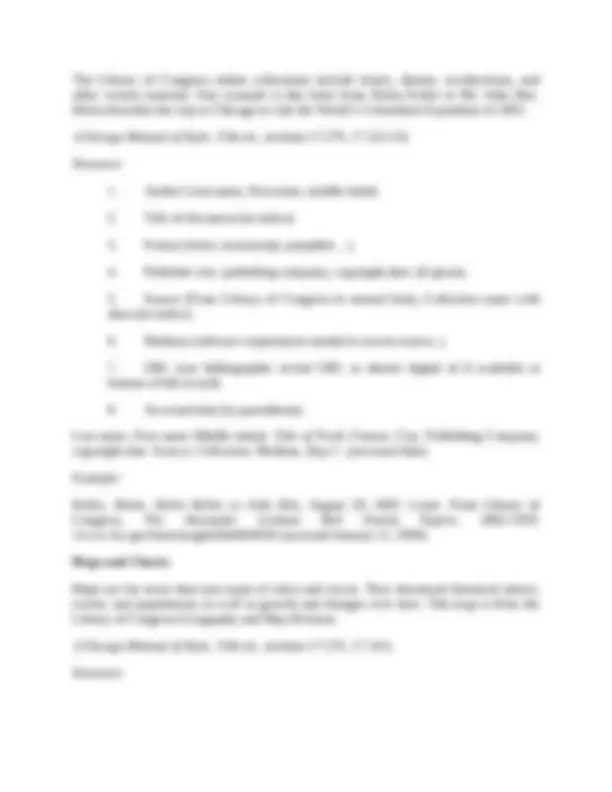
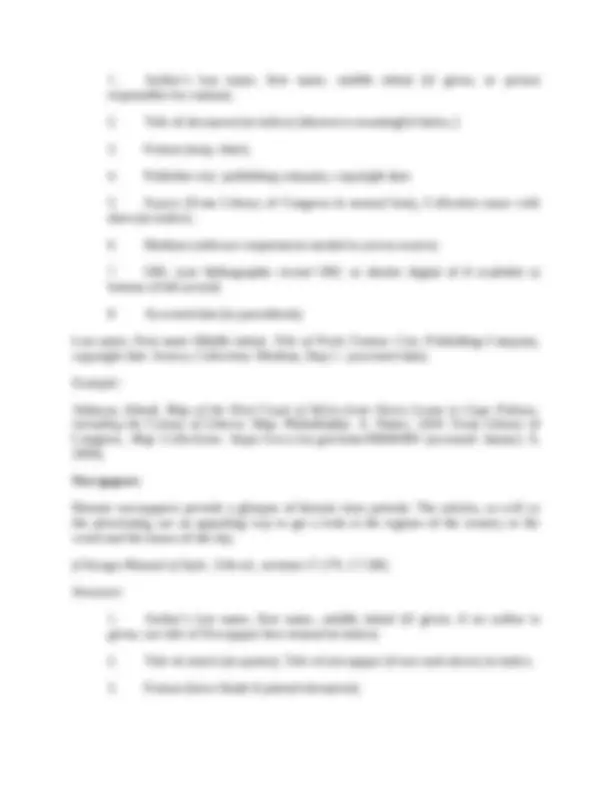
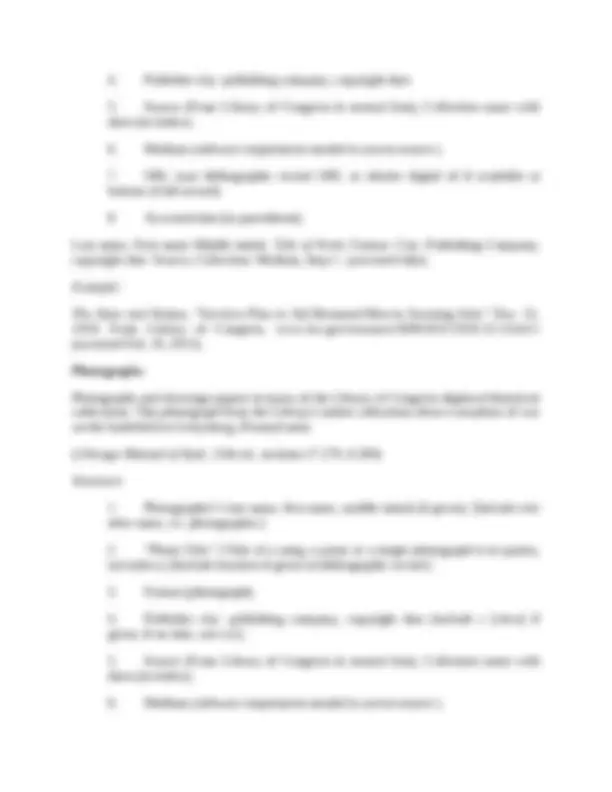

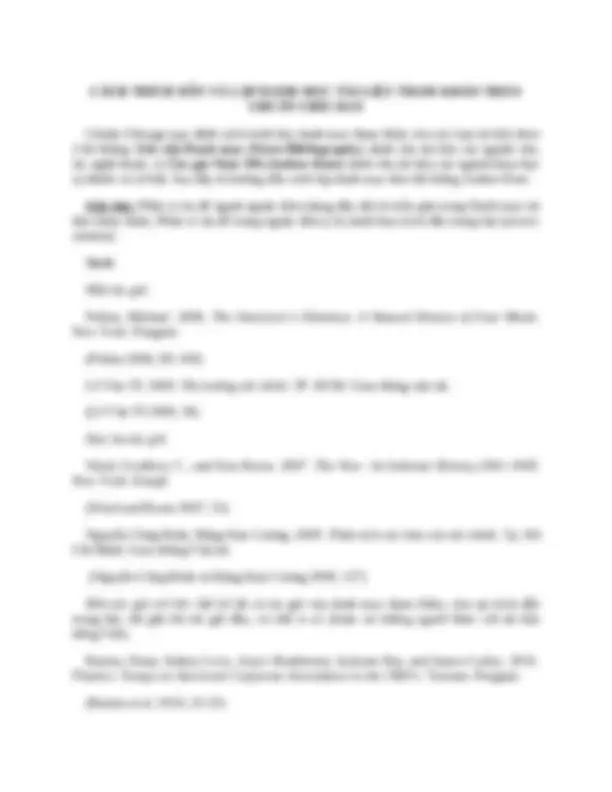
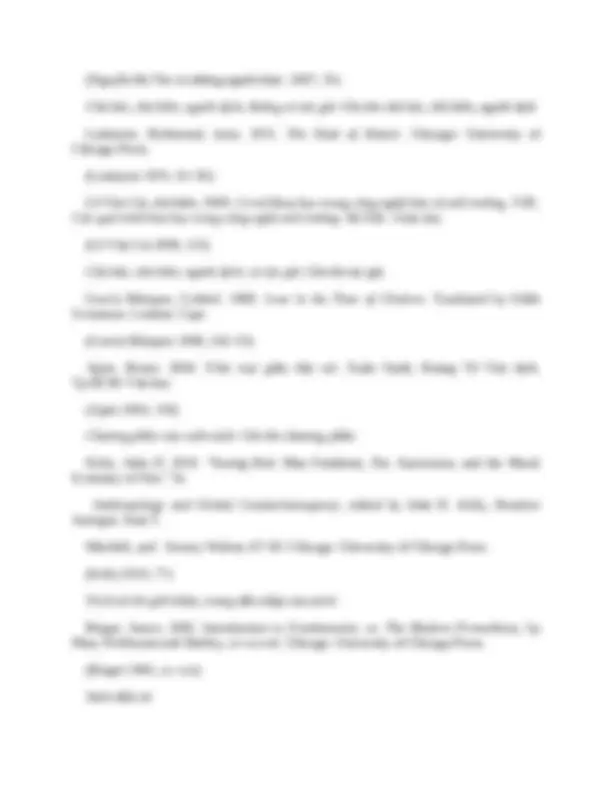
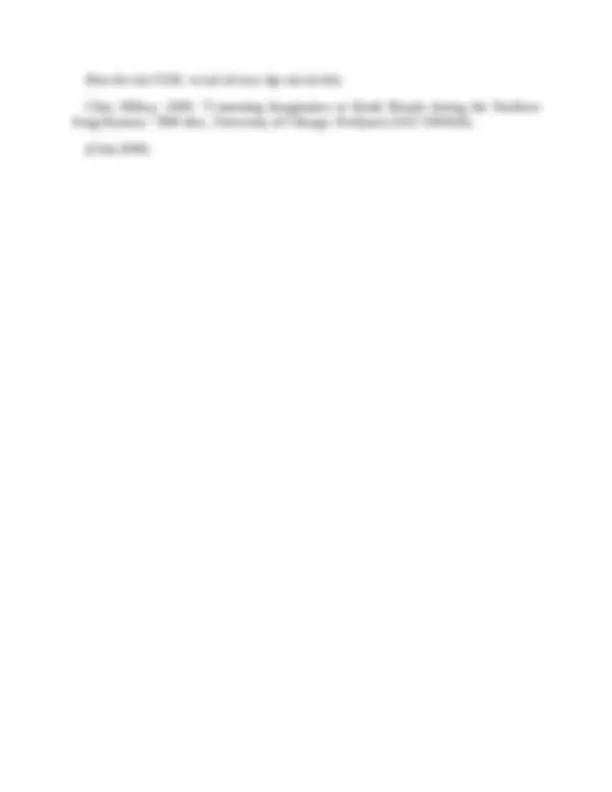


Study with the several resources on Docsity

Earn points by helping other students or get them with a premium plan


Prepare for your exams
Study with the several resources on Docsity

Earn points to download
Earn points by helping other students or get them with a premium plan
Community
Ask the community for help and clear up your study doubts
Discover the best universities in your country according to Docsity users
Free resources
Download our free guides on studying techniques, anxiety management strategies, and thesis advice from Docsity tutors
Detailed guidance on how to properly cite various types of resources from the library of congress using the chicago citation format. It covers the citation structure for entire websites, government publications, manuscripts, maps, newspaper articles, photographs, and special presentations or features. The document also includes examples of how to format the citations in both the notes-bibliography and author-date systems of the chicago style. This comprehensive guide ensures accurate and consistent citation of library of congress materials, which can be challenging due to the diverse nature of the resources available. By following the instructions provided, users can properly attribute sources and adhere to the rigorous standards of the chicago citation style when referencing content from the library of congress.
Typology: Schemes and Mind Maps
1 / 13

This page cannot be seen from the preview
Don't miss anything!








Hướng dẫn trích dẫn bằng Tiếng Việt ở phía dưới (từ trang 9 trở đi), sau hướng dẫn bằng Tiếng Anh CHICAGO CITATION FORMAT Entire Website The website of the Library of Congress connects users to content areas created by the Library’s many experts. In some cases, content can be posted without a clear indication of author, title, publisher or copyright date. Look for available clues and give as much information as possible, including the URL and date accessed. ( Chicago Manual of Style , 15th ed., sections 17.270, 17.237) Structure:
copyright date. Look for available clues and give as much information as possible, including the URL and date accessed. ( Chicago Manual of Style , 15th ed., sections 17.270, 17.295) Structure:
Last name, First name Middle initial. Title of Work. Format. City: Publishing Company, copyright date. Source, Collection. Medium, http://...(accessed date). Example: The Wilbur and Orville Wright Timeline, 1867-1948. Special presentation. From the Library of Congress, The Wilbur and Orville Wright Papers. //memory.loc.gov/ammem/wrighthtml/wrighttime.html (accessed January 10, 2006). Oral History Interviews ( Chicago Manual of Style , 15th ed., sections 17.270, 17.207) Structure:
(Nguyễn Bá Thi và những người khác 2007, 55) Chủ bút, chủ biên, người dịch; không có tác giả : Ghi tên chủ bút, chủ biên, người dịch Lattimore, Richmond, trans. 1951. The Iliad of Homer. Chicago: University of Chicago Press. (Lattimore 1951, 91–92) Lê Văn Cát, chủ biên. 2009. Cơ sở khoa học trong công nghệ bảo vệ môi trường. T.III, Các quá trình hóa học trong công nghệ môi trường. Hà Nội : Giáo dục. (Lê Văn Cát 2009, 125) Chủ bút, chủ biên, người dịch; có tác giả : Ghi tên tác giả García Márquez, Gabriel. 1988. Love in the Time of Cholera. Translated by Edith Grossman. London: Cape. (García Márquez 1988, 242–55) Apitz, Bruno. 2004. Trần trụi giữa bầy sói. Xuân Oanh, Hoàng Tố Vân dịch. Tp.HCM: Văn học. (Apitz 2004, 156) Chương phần của cuốn sách : Ghi tên chương, phần Kelly, John D. 2010. “Seeing Red: Mao Fetishism, Pax Americana, and the Moral Economy of War.” In Anthropology and Global Counterinsurgency , edited by John D. Kelly, Beatrice Jauregui, Sean T. Mitchell, and Jeremy Walton, 67–83. Chicago: University of Chicago Press. (Kelly 2010, 77) Trích từ lời giới thiệu, trang dẫn nhập của sách : Rieger, James. 1982. Introduction to Frankenstein; or, The Modern Prometheus , by Mary Wollstonecraft Shelley, xi–xxxvii. Chicago: University of Chicago Press. (Rieger 1982, xx–xxi) Sách điện tử
Nếu sách có nhiều phiên bản, ghi theo phiên bản đã sử dụng. Nếu là sách lấy trên Internet, ghi địa chỉ website và ngày truy cập nếu cần. Nếu không xác định được số trang thì ghi tên chương phần của sách. Austen, Jane. 2007. Pride and Prejudice. New York: Penguin Classics. Kindle edition. Kurland, Philip B., and Ralph Lerner, eds. 1987. The Founders’ Constitution. Chicago: University of Chicago Press. http://press-pubs.uchicago.edu/founders/. (Austen 2007) (Kurland and Lerner, chap. 10, doc. 19) Bài tạp chí Bài tạp chí in Tại trích dẫn trong bài, chỉ ghi trang có đoạn trích dẫn; tại danh mục tham khảo, ghi số trang của toàn bài tạp chí. Weinstein, Joshua I. 2009. “The Market in Plato’s Republic.” Classical Philology 104:439–58. (Weinstein 2009, 440) Bài tạp chí điện tử Ghi mã số DOI (Digital Object Identifier) nếu có, DOI là mã số truy cập của bài tạp chí trên Internet. Trường hợp không có DOI thì phải ghi địa chỉ website, có thể ghi ngày truy cập nếu cần. Kossinets, Gueorgi, and Duncan J. Watts. 2009. “Origins of Homophily in an Evolving Social Network.” American Journal of Sociology 115:405–50. Accessed February 28,
Đưa tên của CSDL và mã số truy cập của tài liệu. Choi, Mihwa. 2008. “Contesting Imaginaires in Death Rituals during the Northern Song Dynasty.” PhD diss., University of Chicago. ProQuest (AAT 3300426). (Choi 2008)